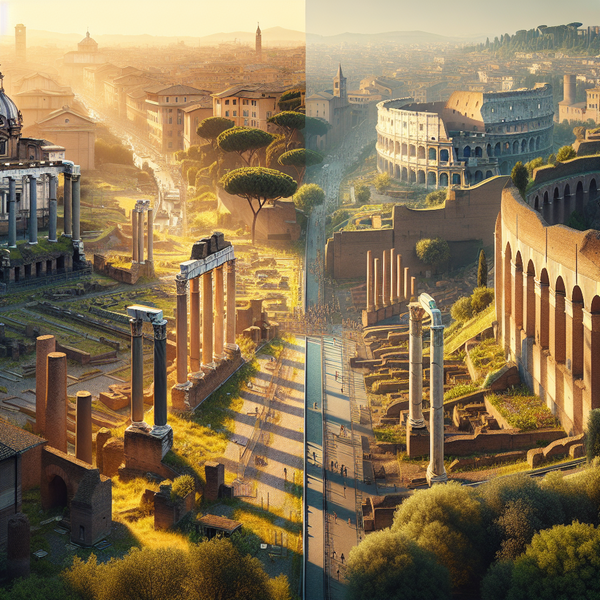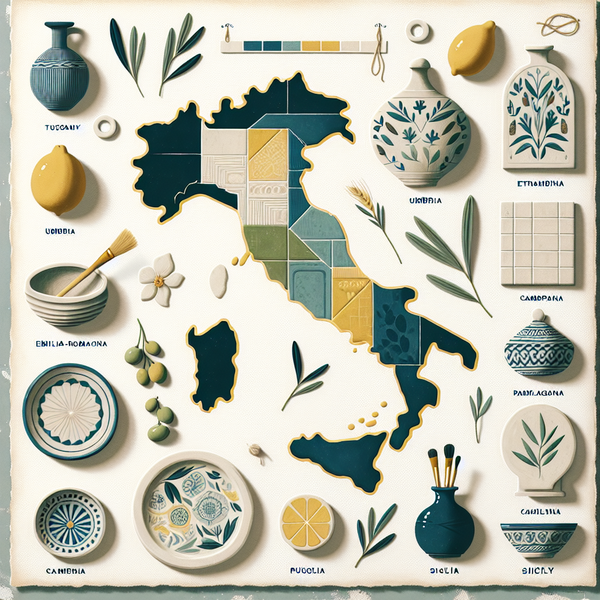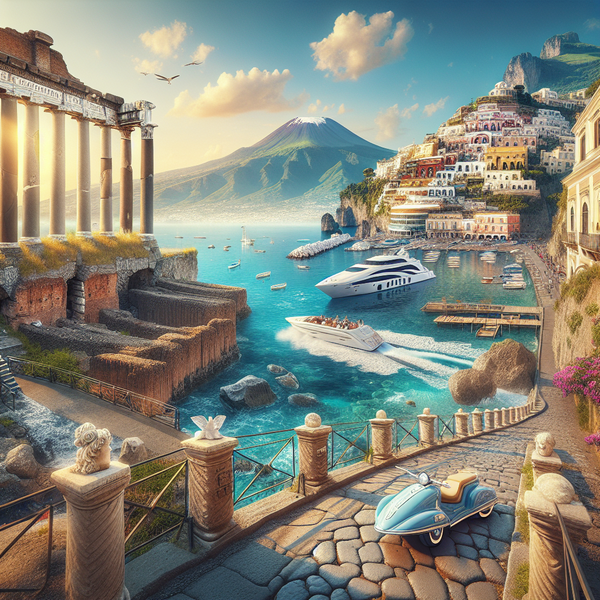Imagine standing in the heart of ancient Rome, surrounded by ruins, marble columns, and sweeping views. You can almost hear the echo of senators debating and emperors proclaiming their power. This is where history comes alive — between the Roman Forum and Palatine Hill. But what’s the difference between these two iconic sites, and how do you make the most of your visit? Let’s dive in.
Go to the section
ToggleRoman Forum vs Palatine Hill: Understanding the Difference
The Roman Forum was the bustling social, political, and religious center of ancient Rome. It served as the city’s beating heart — where victories were celebrated, laws were debated, and temples stood as symbols of divine power.
In contrast, the Palatine Hill is one of the most ancient parts of the city and is famed for being the luxurious residential area of Roman emperors and aristocrats. It rises above the Forum, offering panoramic views and a more serene atmosphere steeped in legend and mythology.
So, the distinction is simple: the Forum was public — the hub of Roman daily life — while Palatine Hill was private, exclusive, and imperial.
Exploring the Roman Forum: What to See
Walking through the Roman Forum feels like stepping back in time. The ruins tell stories of ambition, glory, and architectural brilliance. Each stone and archway unveils a piece of Rome’s incredible past.
Must-See Temples Inside the Roman Forum
- Temple of Saturn: One of the oldest sacred sites in Rome, long associated with prosperity and wealth.
- Temple of Vesta: Known for its circular shape and eternal flame tended by the Vestal Virgins.
- Temple of Castor and Pollux: Recognizable by its iconic triple standing columns that still dominate the Forum’s skyline.
Historic Arches and Basilicas
- Arch of Septimius Severus: A grand monument celebrating military triumphs.
- Basilica Julia: Once a magnificent courthouse and meeting place that reflected the scale of Roman civic life.
The Spirit of the Roman Forum
As you walk along the Via Sacra, you’re literally tracing the footsteps of Caesar, Augustus, and countless others who shaped world history. The atmosphere is electric with historical significance, and every turn reveals a new layer of discovery.
Palatine Hill: The Emperors’ Sanctuary
If the Roman Forum represents public power, the Palatine Hill embodies personal prestige. This is where ancient legends meet imperial majesty. According to Roman mythology, this hillside was the birthplace of Rome itself, as it’s said Romulus founded the city here after a divine omen.
Exploring the Palatial Residences
- Domus Flavia: The grand reception palace featuring intricate courtyards, reflecting pools, and spaces designed to impress visiting dignitaries.
- Domus Augustana: The private quarters of the emperors, where luxury met tranquility.
- House of Livia: A well-preserved residence with striking frescoes that give a vivid glimpse into ancient domestic life.
Gardens and Views from the Palatine Hill
- Farnese Gardens: Developed during the Renaissance, these terraced gardens provide an oasis of calm with exceptional city vistas.
- Overlook Points: From the top of the hill, you can take in mesmerizing views of the Roman Forum, the Colosseum, and the Capitoline Hill.
Roman Forum vs Palatine Hill: Which Should You Visit First?
Many visitors wonder where to begin. The answer depends on your energy level and perspective preferences. Starting from the Palatine Hill allows you to work your way down into the Forum, giving you a bird’s-eye view before immersing yourself in the ruins.
On the other hand, beginning in the Roman Forum lets you explore the remnants of temples and arches first, before climbing to the more peaceful Palatine gardens for a spectacular conclusion.
Practical Tip
Your entrance ticket usually covers both attractions, so there’s no need to choose one over the other. Make sure to allow at least two to three hours for a full experience.
Roman Forum vs Palatine Hill: Visitor Experience
Both sites offer contrasting yet complementary experiences. The Forum is lively, compact, and packed with detail. Palatine Hill is open, green, and atmospheric, perfect for reflection and panoramic photography.
What You’ll Feel and Discover
- At the Roman Forum: Feel the pulse of ancient civic life and witness the ruins of Rome’s most sacred temples.
- At Palatine Hill: Experience tranquility, mythology, and imperial luxury surrounded by gardens and grand remains.
Tips for Visiting the Roman Forum and Palatine Hill
These two landmarks are extensive, so preparation helps enhance your visit. Comfortable shoes, sun protection, and a refillable water bottle are must-haves, especially during warm days. Early mornings or late afternoons are the best times to visit to avoid crowds and benefit from softer light for photography.
Best Routes and Entry Points
- Main Entrance: The easiest access is through the combined entrance shared with the Colosseum.
- Alternative Access: You can also enter from the Palatine side, which often has shorter lines.
Enhance Your Experience
- Consider renting an audio guide or joining a small group tour to appreciate the layers of history beneath your feet.
- Bring a map of the ruins—navigating between sites like the Arch of Titus, the Senate House, and imperial palaces can be complex.
Roman Forum vs Palatine Hill: Photography Highlights
Both the Roman Forum and Palatine Hill are a photographer’s dream. The Forum’s monumental ruins glow golden under the afternoon sun, while Palatine Hill offers higher vantage points that show the entire archaeological landscape.
Top Photo Spots
- From Palatine terraces overlooking the Forum.
- Beside the Arch of Septimius Severus, capturing the colonnades.
- At the Temple of Saturn at sunrise for that perfect postcard image.
Lighting Tips
Morning visits provide soft hues and shadows that emphasize textures. Evening light brings a warm glow that adds drama to your shots.
Roman Forum vs Palatine Hill: How They Complete Each Other
While it’s possible to compare the two, the real magic lies in how they complement one another. The Roman Forum showcases Rome’s external grandeur — temples, arches, and meeting places for the people. Palatine Hill reveals the private side of power, where emperors lived surrounded by art and nature.
Together, they tell the full story of ancient Rome, from politics to mythology, from triumphs to daily life. Visiting both gives you a complete vision of this ancient civilization’s soul.
Final Thoughts: Roman Forum vs Palatine Hill
Whether you’re a history enthusiast, a romantic explorer, or simply curious about the cradle of Western civilization, both the Roman Forum and Palatine Hill deserve a spot on your itinerary. One embodies the public pulse of Rome, while the other offers its private heartbeat.
Take your time, look beyond the ruins, and imagine the grandeur that once filled these spaces. In this compact area of ancient Rome, the world’s greatest empire came to life — and you can still feel its power today.



